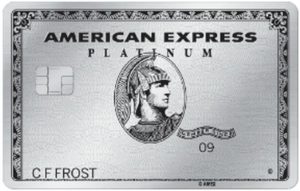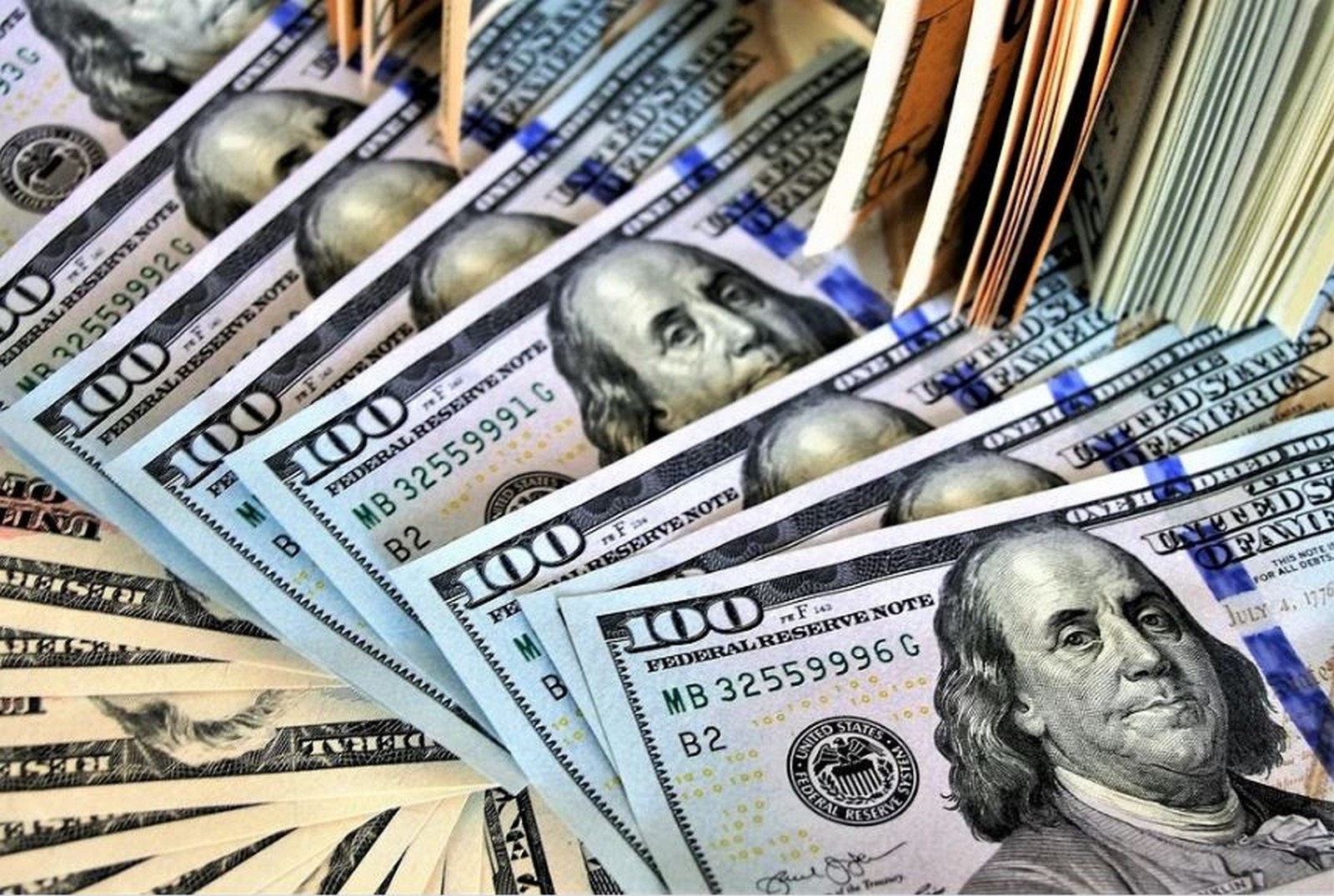Chase Sapphire Reserve vs Amex Platinum: Which Is The Better Credit Card?
Today, we’ll compare the Chase Sapphire Reserve vs Amex Platinum Card to see which is the better credit card. While both cards have many things in common, such as premium travel perks, valuable points currencies, and no foreign transaction fees, there’s also a lot that’s different. In this comparison, we’ll look at the annual fee, welcome offer, points earning rates, benefits/perks, and usability of the points. As Chase and American Express also have added temporary perks to the cards, we will compare those, as well.
There’s a lot to cover, so here’s a breakdown:
- Annual Fee
- Welcome Offer
- Points Earning Rates
- Benefits & Perks
- Usability Of Points
- Temporary Benefits In 2020
- Final Thoughts
Annual Fee
As premium travel cards, the Chase Sapphire Reserve and Platinum Card from American Express both have large annual fees. In fact, these fees can be a turn-off to many people. Are the fees worth it? Here are the fees from the outset and what I see as the “true cost” after the perks (which we cover further down).
| Chase Sapphire Reserve | Amex Platinum Card | |
|---|---|---|
| Annual Fee | $550 | $550 |
On a given day, the annual fee for both cards is $550. However, due to the outbreak of COVID-19 and reduced value from a ‘travel rewards credit card’, Chase is crediting existing cardholders with $100 towards their Chase Sapphire Reserve annual fee. That brings the fee back to its previous $450 value.
If you want to add authorized users on your account, those come with separate fees. Each additional card on your Chase Sapphire Reserve account costs $75 per year. With the Platinum Card, you get 3 additional users for $175. After that, each user is $175 per card. You can avoid the AU fee on the Platinum card by giving the users Gold cards instead of Platinum cards. The earning structure is still the same as if they carried a Platinum card but they don’t get extra perks.
However, the ‘true cost’ of the card comes after considering what you get back. How much does this card really cost each year? From the perks and benefits below, the “first year cost” of the cards changes drastically. If you can take advantage of all of the built-in perks and statement credits, the Chase Sapphire Reserve cost is $90. If you maximize the credits from the Amex Platinum Card, the cost is -$50! You can use more benefits than the cost of the annual fee.
| Chase Sapphire Reserve | Amex Platinum Card | |
|---|---|---|
| Annual fee | $550 | $550 |
| Global Entry/TSA | $100 | $100 |
| App credits | $60 | $200 |
| Travel credits | $300 | $200 |
| Shopping credits | $0 | $100 |
| First year cost | $90 | -$50 |
Note that how you value these credits may depend on how you use them.
Per Year Cost Over 4 Years
Since one of the key perks is Global Entry/TSA Pre-Check, which you can use again after 4 years, that’s worth figuring out. If you keep the card for 4 years to renew this benefit, here are the average costs per year on the cards: $165 per year for the CSR and $25 for the Amex Platinum Card.
Welcome Offer
What are the welcome offers on these 2 cards? Here, we will look at the welcome offer terms, spend required, and net value at the end. I will use the standard, public offers for these. It’s worth remembering that the Platinum Card often has elevated offers, but our math for this comparison is the standard offer.
| Chase Sapphire Reserve | Amex Platinum Card | |
|---|---|---|
| Welcome Offer | 50,000 points | 60,000 points |
| Spend Required | $4,000 in 90 days | $5,000 in 90 days |
| Value of Points | 1.7cpp | 1.7cpp |
| Net Value | $850 | $1020 |
Chase Ultimate Rewards and American Express Membership Rewards are the 2 most valuable currencies in this hobby. Later, we’ll look at the myriad of ways that you can use them, but suffice to say here that they’re valuable. Average values for the 2 are the same, though these can vary greatly depending on how you use them. At 1.7 cents per point value, the welcome offer from the Platinum Card is worth more, but you have to spend an extra $1,000 to earn it.
With the Platinum Card welcome offer, you earn $204 of rewards for each $1,000 of spend required. With the Sapphire Reserve from Chase, you earn $212.50 worth of rewards for each $1,000 of spend required. Looking at it from a perspective of input and output, Chase comes out ahead.
Winner: Chase Sapphire Reserve
Points Earning Rates
What about daily use on the Chase Sapphire Reserve vs Amex Platinum Card? In this section, we’ll look at the points you can earn on the card from daily use. Here are the bonus categories and points earning rates on the 2 cards.
| Chase Sapphire Reserve | Amex Platinum Card | |
|---|---|---|
| Flights | 3x | 5x |
| Bank travel portal | 3x | 5x |
| Travel | 3x | 1x |
| Dining | 3x | 1x |
| Other purchases | 1x | 1x |
| Lyft rides | 10x | 1x |
| Cash out rate | 1 cent | 0.6 cents |
There are a lot of moving pieces to this. Firstly, Chase gives 3x earning rates on anything considered “travel”. However, that earning rate only applies after your first $300 spend on travel, since you get a $300 travel credit every year. Other 3x earning with the Sapphire Reserve comes on restaurants/dining, which is a bonus category that the Amex Platinum Card does not have.
On the Amex side, the 5x earning rate on all travel (flights, hotels, etc.) booked through the AmexTravel.com site is huge. So is the 5x earning rate on flights purchase directly from the airline. If you book a lot of travel this way, 5x is obviously higher than 3x.
Overall, though, Chase comes out ahead with the fact that you can earn 3x rates on anything travel PLUS all restaurants. The limited categories for 5x earning with Amex over overcome by the wide range of 3x earning on the Sapphire Reserve. If you use Lyft a lot, the 10x earning here is also a boost.
The lowest value proposition on either side is using your points for cash back or erasing purchases from your statement. Chase offers 1 cent per point value on cash back. American Express offers a measly 0.6 cents per point.
Better Cash Out Options Available
However, it’s worth noting that both of these can be improved. The Chase Sapphire Reserve has a temporary 1.5 cents cash out option. If you hold the Amex Platinum Card from Schwab, you can cash out at 1.25 cents per point.
Winner: Chase Sapphire Reserve
Benefits & Perks
As premium travel cards, both cards have a wide arsenal of perks and benefits. In looking at the Chase Sapphire Reserve vs Amex Platinum Card, we’ll consider 2 main categories: perks and protections. Here are the comparisons.
Card Perks
Perks include things like elevated status, rebates, statement credits you can earn, etc. These are often the main selling points for talking about the value and “why you should have this card” concepts on major credit cards. The 2 cards have some key differences here.
| Chase Sapphire Reserve | Amex Platinum Card | |
|---|---|---|
| Lounge access | Priority Pass unlimited visits | Priority Pass unlimited visits; American Express lounges; Centurion lounges; Delta lounges when flying Delta |
| Global Entry/TSA | Application fee reimbursement every 4 years | Application fee reimbursement every 4 years (Global Entry) or 4.5 years (TSA Pre-check) |
| Status perks | Elevated perks in the Luxury Hotel & Resort Collection; 1 year of complimentary Lyft Pink; DashPass membership with Door Dash | Hilton Gold status; Marriott Gold status; Elevated perks in the Fine Hotels & Resorts program; Perks and $100 credits in The Hotel Collection; Rental car upgrades with Hertz, National & Avis |
| Monthly credits | $15 Uber / Uber Eats monthly credit ($35 in December) | |
| Annual credits | $300 travel credit; $60 Door Dash credits | $100 Saks Fifth Avenue credits (2 x $50 credits); $200 airline credit on preferred airline |
The credit for Global Entry or TSA Pre-Check applications is the same. Priority Pass lounge membership is also the same. Other than that, the perks on the 2 cards couldn’t be more different.

Chase
The Chase Sapphire Reserve offers elevated status for Lyft and Door Dash programs, which can save on fees for using these services. Additionally, there are $60 in annual credits for Door Cash. Chase also offers upgrade perks with their hotel program. The biggest asset, though, is the ease of use for the $300 travel credit. The first $300 you spend per year on anything deemed “travel” works for this credit.

American Express
On the face of it, the American Express Platinum Card has more credits. The dollar value appears bigger, but the credits are more difficult to use. The $200 airline credit doesn’t apply to purchasing tickets. Instead, it applies to things like checked bag fees, pet fees, or choosing a seat when forced to pay for that. It also applies only on 1 airline, which you can choose in January of that year.
The Uber / Uber Eats credits with Amex are also not as easy to use as they appear. They are given as monthly amounts, so you need to remember to use them. They also only work in the US, which is disappointing that you can’t use them on a trip overseas. Similarly, the twice-per-year $50 Saks Fifth Avenue credits are ‘use it or lose it’. These credits look big but are designed to create “breakage”, where the customers do not actualize the full value of the perk.
Where American Express does offer something better is in lounge perks. In addition to Priority Pass, they also offer access to all of the American Express and Centurion lounges. Additionally, if you’re flying on Delta, you can use your Platinum Card to enter the Delta lounge that day. Chase, on the other hand, has Priority Pass-affiliated restaurants you can visit. Priority Pass membership from an Amex card doesn’t cover this, but these restaurants typically give $28 of restaurant credit for you and a guest or 2, meaning you can eat a decent meal for free at these airport restaurants.
In terms of status, American Express has a clear advantage. They provide upgrades with 3 different rental car companies. They also provide automatic Gold status with Marriott and Hilton. While those aren’t earth-shattering, they can lead to room upgrades, free parking, free breakfast, etc. These depend on the hotel, obviously.
Result: Tie
I call this a tie because the benefits really depend on what you’re looking for. If you value lounges and rental car upgrades, the Amex Platinum Card is the winner. If you value ‘ease of use’ for your credits, the Chase Sapphire Reserve is the clear winner.

Card Protections
Protections include things like insurance perks, coverage against damages, or having you back when companies don’t do the right thing. Here is a comparison of the differences and similarities on these 2 cards.
| Chase Sapphire Reserve | Amex Platinum Card | |
|---|---|---|
| Trip cancellation / interruption / delay | $10,000 per person and $20,000 per trip for cancellations and interruptions; $500 per ticket for delays | $10,000 per trip and $20,000 per year for cancellations and interruptions; $500 per ticket for delays |
| Rental car insurance | Primary coverage, up to $75,000 | Secondary coverage or primary coverage for purchase |
| Lost / damaged luggage | $3,000 per passenger | $3,000 per passenger |
| Emergencies | $100,000 for medical emergencies and medical transportation | If Global Assist arranges it, no charge; if third-party, you pay for it |
| Purchase protection | 120 days of protection for $10,000 per claim and $50,000 per year | 120 days of protection for $10,000 per claim and $50,000 per year |
| Return protection | 90 days of protection for $500 per item and $1,000 per year | 90 days of protection for $300 per item and $1,000 per year |
| Extended warranty | 1 extra year of warranty on eligible items with 3 years or less of warranty | 1 extra year of warranty on eligible items with 5 years or less of warranty |
Both cards offer similar protections for delays, cancellations & interruptions of your trip. They also have very similar protections for luggage issues, purchase protection, and return protection. The extra 2 years in the warranty coverage terms for the Platinum Card can’t be overlooked. However, these categories are more similar than they are different.
The real differences come in emergencies and with rental cars. For the latter, Chase provides primary coverage, which is much better than the secondary coverage or ‘can be purchase’ coverage American Express offers.
Additionally, Chase has specific terms for medical emergencies, including instances where you may need to be evacuated or moved to another area for treatment. American Express has a Global Hotline that you can call for help in emergencies. They may be able to arrange this transportation for you. If not, and they arrange a 3rd-party agency to move you, you’ll pay for it yourself. Maybe your health insurance from home covers it, but maybe not.
Instances like these are why I buy travel insurance. It’s worth remembering that these types of coverage only apply if you’ve paid for the trip with this card. If you didn’t pay for the full trip, your protections may not be active. It’s worth reading the full terms before assuming you have coverage.
Winner: Chase Sapphire Reserve
Usability Of Points
Both Chase Ultimate Rewards and American Express Membership Rewards are “transferrable currencies”. This means that you can transfer them to a variety of airlines and hotel programs. You also can use them to purchase travel through the bank’s travel portal. Additionally, you can cash them out for statement credits to reduce your bill. Here’s a look at the usability of the points.
| Chase Sapphire Reserve | Amex Platinum Card | |
|---|---|---|
| Airline partners | 10 airlines | 18 airlines |
| Hotel partners | 3 hotel chains | 3 hotel chains |
| Unique partners | 1 airline, 2 hotel chains | 4 airlines, 2 hotel chains |
Transfer Partners
Accounting for all the major programs (American Express Membership Rewards, Chase Ultimate Rewards, Citi ThankYou Points, plus Barclays and Capital One), Chase has 1 airline (United, which has co-branded credit cards from Chase) and 2 hotel chains (Hyatt & IHG, which both have co-branded credit cards from Chase) that no other partners can transfer to. On the flip side, Amex has 4 airlines (ANA, El Al, Hawaiian, and Delta – which has co-branded credit cards from American Express) and 2 hotel chains (Choice & Hilton – the latter has co-branded credit cards from Amex) that are unique transfer partners.
It’s worth noting that not all transfer partners are created equal. While all Chase transfers are at 1:1 ratios, that’s not true with American Express. Transfers to Aeromexico are 1:1.6, while El Al transfers are 50:1. JetBlue transfers are 1:0.8, and Hilton transfers are 1:2.
Travel Portal
Within the Chase travel portal, the Chase Sapphire Reserve allows you to use your points at 1.5 cents each to purchase travel. This is a clear advantage over using your Platinum Card on AmexTravel.com. Why? Because you get only 1 cent per point on flights and a meager 0.7 cents per point on hotels.
Cash Out
As mentioned above, the lowest value proposition is using your points for cash back or erasing purchases from your statement. Chase offers 1 cent per point value on cash back. American Express offers a measly 0.6 cents per point. These values can be improved, but this is not standard for all situations. The Chase Sapphire Reserve has a temporary 1.5 cents cash out option. If you hold the Amex Platinum Card from Schwab, you can cash out at 1.25 cents per point.
Winner: Depends on the programs you like
Ultimate Rewards and Membership Rewards are both excellent currencies. They have some overlap, but there are also programs that only work with one but not the other. If you’re a big fan of Hyatt or United, you’ll immediately say that UR points are better. If you like ANA or Delta, you’ll be defensive of MR points. I see pluses and minuses in both. It’s a tie.
Temporary Benefits In 2020
At present, both cards have temporary parks that are worth considering. These can change the value of the cards in terms of perks, earning rates, or even which one you apply for/keep/cancel.
| Chase Sapphire Reserve | Amex Platinum Card | |
|---|---|---|
| Streaming credits | $20 per month May-December 2020 | |
| Wireless credits | $20 per month May-December 2020 | |
| Reduced annual fee | $100 credit for existing cardholders who renew in 2020 | |
| Cash out rate | 1.5 cents per point until September 30, 2020 | |
| Change in perks | June-December 2020, use your $300 travel credit at gas stations or supermarkets instead |
Because people are not traveling as much right now, having credit cards loaded with travel perks doesn’t make a lot of sense. Many people are trying to slash their credit card fees. To prevent this mass exodus, Chase and American Express added temporary perks.
Chase Sapphire Reserve Temporary Perks
From June to December 2020, Chase allows cardholders to use their $300 travel credit at supermarkets or gas stations, instead of on travel. They’ve also given a $100 statement credit for renewal on the annual fee. The biggest variable in the temporary perks is allowing people to cash out their Ultimate Rewards at 1.5 cents each. I don’t value the change in use for the $300 credit as an additional perk. It provides flexibility but not extra money. The $100 credit is obvious. The real question in how much value these temporary perks have lies in how much you earn & cash out UR points during this time.
American Express Platinum Card Temporary Perks
May-December 2020, you get $20 per month in credits for streaming and wireless. That’s $20 each, so $40 per month. Since this covers 8 months, I consider this $320 in extra perks.
Winner: Chase Sapphire Reserve
For those who just want value added to the card without much effort, the Platinum credits have an obvious value to be seen. Considering people like me, who live outside the U.S., this is the winner. For anyone who sees the possibility written into the CSR benefits at this time, that becomes the real winner.
Final Thoughts on Chase Sapphire Reserve vs Amex Platinum Card
When considering the Chase Sapphire Reserve vs Amex Platinum Card, there’s a lot of overlap. Which is the better credit card? They both have tons of travel perks. Some of the perks, like Priority Pass or trip cancellation, are the same. However, the cards have significant differences.

The Chase Sapphire Reserve came out as the winner in more categories than the American Express Platinum Card. However, what you use the card for (restaurants? airfare?) can have a big sway in how you value the earning rates on the cards. And what about status with hotels or rental cars? Overall, the Chase Sapphire Reserve edges out the American Express Platinum Card if we take an emotionally-divorced, mathematical look at their values. At the end of the day, the one that works with your travel profile is the better credit card for you. I have the Platinum Card, and my wife has the Sapphire Reserve. For us, that’s the ideal approach.
Which card do you think is the better credit card? Is one category more important than the others in your valuation?








The Chase credits (travel, doordash, etc.) are easy to use, everything qualifies; Amex credits are much harder particularly uber per month credits. The Saks credit is almost useless. In my biased view Chase is the better all-around card for the reasons you list (plus the PP restaurant credits), but Amex is valuable if your home airport has Amex lounges and also for FHR program (one hotel stay could easily pay for the card).
Just have both of them like I do. That way you don’t have to pick one over the other.
You forgot to mention that the Chase Reserve card thru offers restaurant visits in addition to Lounge Visits. $28 dollar credits for food outside of a Lounge is a really big plus in favor of the Reserve Card.
Valid point! I always forget about this, since we’re never able to use it due to not passing through airports where it applies.